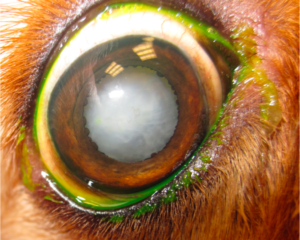It really is all about that moment. That moment when Sam is reunited with you after spending a night in the hospital. The moment he turns the corner, eyes bright, and he sees you as if for the first time, and almost pulls the leash out of my hands as he jumps into your lap. You smile and laugh, seeing him so full of energy. I live for that moment!
The day before, you gave her one last hug, a kiss on the nose and hand over the leash to me. He was blind, bumping into walls, unable to go up and down the steps. You had been struggling with his diabetes for a while; insulin needle boxes now litter your kitchen countertop. You never thought you would be someone who would have to poke your own pet, twice a day, monitoring sugar levels, monitoring ins and outs. It is somehow a skill you acquired along the way in this journey with a diabetic pet. You couldn’t not treat him. And so you felt like you had reached a new plane of normal; sugar levels were controlled and you had gotten the hang of the insulin injections. And then, over the course of a weekend, he went blind.

At first, it just seemed like he was missing a step, stumbling. But over the course of a day or two he walked right into the living room chair that had always been there. You bring him in to his primary care veterinarian, who diagnoses him with cataracts, and refers him right away to me.
Cataracts occur in 80% of dogs within the year following the diagnosis of diabetes. The elevated blood glucose (sugar) levels cause an increase in glucose levels in the lens. This shunts the metabolism of lens glucose from the classic hexokinase pathway to a pathway that uses the aldose reductase enzyme. The increase in aldose reductase leads to a buildup of sorbitol within the lens. Sorbitol pulls water into the lens, causing swelling, opacity of the lens and rapid onset blindness.
At our initial exam together, we spoke about Sam’s cataracts. Often, we can start medications to minimize intraocular inflammation from the cataract and decrease the possibility of secondary glaucoma.
Then we spoke about surgery. Cataract surgery is a ballet dance; coordinated, challenging and rewarding. Sam went through the cataract pre-testing steps:
- Gonioscopy – evaluation of the drainage angle. Some dogs are born with an abnormal drainage angle that predisposes them to glaucoma after surgery
- Ocular ultrasound – a sonogram of the back of the eye to check for retinal detachments
- Electroretinogram – a test to ensure adequate retinal function prior to surgery
When Sam passed with flying colors, we set up his big day. Under general anesthesia, under an operating microscope, the cataracts were removed with phacoemulsification. Brand new acrylic intraocular lenses were placed in both eyes, and tiny 9-0 sutures were placed to close his 3mm incisions.
He woke up slowly, snuggled in blankets with his cone of shame in place. As we wrap the surgical packs and wash the instruments, Sam lifts his head, still groggy from the anesthesia medication, but his eyes lock on me. I smile; he seems confused for a moment but wags his tail. I walk towards him and he follows my movement, and I know that this is the very best feeling in the world. This is why I do what I do.
 After attending Colby College, Dr. Micki Armour graduated from the University of Pennsylvania’s School Of Veterinary Medicine. After completing an internship at Red Bank Veterinary Hospital and a three-year residency in Tustin, California, Dr. Armour became a board certified Diplomate of the American College of Veterinary Ophthalmologists. Armour Veterinary Ophthalmology joined Friendship in 2018.
After attending Colby College, Dr. Micki Armour graduated from the University of Pennsylvania’s School Of Veterinary Medicine. After completing an internship at Red Bank Veterinary Hospital and a three-year residency in Tustin, California, Dr. Armour became a board certified Diplomate of the American College of Veterinary Ophthalmologists. Armour Veterinary Ophthalmology joined Friendship in 2018.
